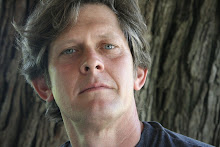Many still buy into the myth that "building green" means a building project has to cost more. Conventional wisdom has been telling us for years that respecting and protecting the natural environment is at odds with healthy economic development.
Conventional wisdom lied.
Let's look at the developer's first "touch" of the land - site work - as an example. Does it cost more to use green building principles in site development?
Consider this.
Clear-cutting and flattening a wooded site, while expeditious for the developer and engineer - it just takes one note on a drawing to "clear all vegetation" - has numerous hidden and direct costs.
Every time you see men and machines moving dirt on a clear-cut site, somebody is paying the tab. Erosion becomes an issue where it was not before, and costs are incurred mitigating the manufactured problem. Additional engineering fees come about because the site's storm water drainage system, which worked perfectly before the site was touched, must now be outfitted with large, buried concrete culverts or an open man-made ditch or stream. Here again, we're adding money on top of money.
Heavy intervention on a building site always costs more than working with the natural elements. Leaving lowlands natural allows for denser development in the highlands with net equality in the development potential while keeping the natural drainage system (provided free by Mother Nature) in tact.
And then there are the hidden costs. A neighborhood with mature trees is more beautiful and more temperate than a clear-cut site. Shade in the summer cuts cooling costs, and natural vegetation cuts the bitter wind in the winter. Ignoring these "comfort" issues by heavy-handed development diminishes the quality of life of the inhabitants, the users, and the public at large.
A few dollars of fast cash to the developer from selling the trees does not even begin to make up for the lack of them. You can wait 30 years for the ecosystem to replenish itself, or you can spend a hansom sum on landscaping (and still wait 10 years) to reclaim the quality of life resulting from leaving well enough alone.
So building green, when done with creative planning and forethought, adds value and contributes to the bottom line of a building project. Sometimes dramatically.
Green is now the new Green.
Subscribe to:
Post Comments (Atom)





No comments:
Post a Comment